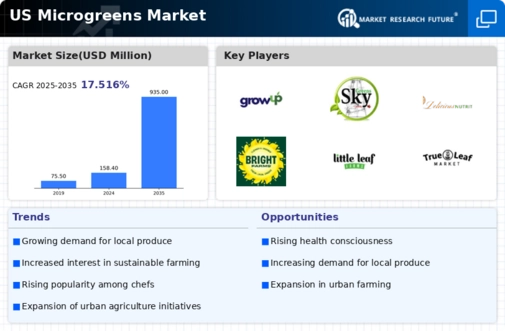The US Microgreens Market has witnessed a significant surge in interest and investment in recent years, driven by an increasing consumer preference for healthy, fresh, and nutrient-dense food options. As more consumers become aware of the health benefits associated with microgreens, ranging from enhanced flavor to minimal environmental impact, competition among producers has intensified. The market is characterized by a mix of established players and emerging startups, each striving to capture market share through innovative growing techniques, distribution networks, and targeted marketing strategies.
Economic shifts and changing consumer behaviors are also playing a crucial role in shaping competitive dynamics, making it essential for businesses to stay agile and responsive to market trends.GrowUp Farms has positioned itself as a notable contender within the US Microgreens Market, leveraging its strengths in controlled environment agriculture and sustainability. The company's expertise in hydroponic and vertical farming techniques enables it to produce high-quality microgreens year-round, which is a significant advantage in meeting consumer demand. Furthermore, GrowUp Farms emphasizes its commitment to local sourcing and reducing food miles, appealing to environmentally conscious consumers.
The company's strong marketing efforts and partnerships with local restaurants and grocery stores enhance its visibility and market reach. By focusing on fresh, organic products and emphasizing community engagement, GrowUp Farms has cultivated a loyal customer base that appreciates the quality and nutritional value of its offerings.Sky Greens is another prominent player in the US Microgreens Market, known for its innovative approach to urban farming and sustainable agriculture. The company specializes in growing a range of microgreens using advanced technology, which allows for efficient production and minimal resource consumption.
Key products offered by Sky Greens include various microgreens such as basil, radish greens, and sunflower shoots, which are popular among health-conscious consumers and chefs alike. The company's strategic focus on building a strong distribution network, including partnerships with health food stores and online retailers, significantly bolsters its market presence. Additionally, Sky Greens has engaged in collaborations and acquisitions that enhance its operational capabilities and expand its product offerings in the US. Leveraging its strengths in technology and sustainability, Sky Greens is well-positioned to thrive in the competitive landscape of the US Microgreens Market.





















